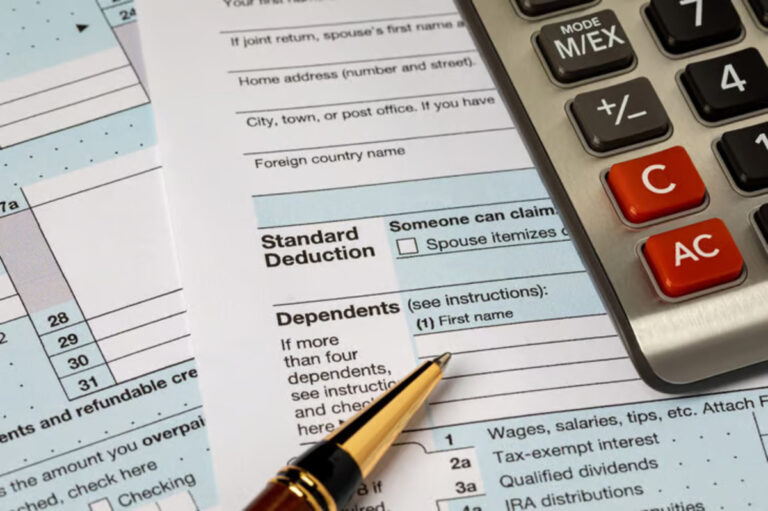🎧 Listen to This Article
As the sun sets on another tax season, Americans face a compressed window to finalize — or delay — their 2025 tax filings. April 15 remains the immovable deadline, and the stakes are higher than they may appear. This isn’t just about compliance; it’s about strategic positioning in an increasingly nuanced and inflation-adjusted tax landscape.
Why This Year’s Filing Is Different
For most taxpayers, 2025 brings a tax code that’s evolved — not radically, but enough to matter. Inflation-indexed brackets, expanded credits, and higher contribution limits represent not just technical adjustments but potential levers for real financial planning. For business owners and households alike, understanding these subtle changes is essential not only to avoid penalties but to optimize outcomes.
Key Deadlines: What You Can’t Miss
The filing deadline is April 15, 2025. However, you can file for an extension (Form 4868) to delay submitting your return until October 15. Importantly, this does not delay your payment deadline. Taxes owed are still due by April 15, and failure to pay will incur interest and penalties.
If you’re self-employed or paying quarterly estimates, your schedule looks like this:
- April 15, 2025
- June 16, 2025
- September 15, 2025
- January 15, 2026
2025 Tax Changes: Strategic Implications
1. Standard Deduction Increases
In an inflation-responsive move, the IRS has bumped up the standard deduction:
- $14,600 (single filers)
- $29,200 (married filing jointly or surviving spouse)
- $21,900 (heads of household)
This automatically reduces taxable income for most Americans who don’t itemize, effectively shielding more income from taxes.
2. Tax Bracket Threshold Shifts
Though the percentage rates remain unchanged, bracket thresholds have shifted upward. This subtle recalibration can mean lower effective tax rates for many, despite modest income growth.
| Tax Rate | Single Income | Married Filing Jointly |
|---|---|---|
| 10% | Up to $11,925 | Up to $23,850 |
| 12% | $11,926–$48,475 | $23,851–$96,950 |
| 22% | $48,476–$103,350 | $96,951–$206,700 |
| 24% | $103,351–$197,300 | $206,701–$394,600 |
| 32% | $197,301–$250,525 | $394,601–$501,050 |
| 35% | $250,526–$626,350 | $501,051–$751,600 |
| 37% | Over $626,350 | Over $751,600 |
3. Retirement Account Adjustments
Tax-advantaged savings get a boost:
- 401(k): $23,000 (with $7,500 catch-up for 50+)
- IRA: $7,000 (with $1,000 catch-up for 50+)
These increases are more than numerical — they are signals. They emphasize government encouragement for retirement resilience in a volatile economic future.
4. Health Savings Account (HSA) Limits
- $4,150 (individual)
- $8,300 (family)
- $1,000 catch-up (age 55+)
HSAs remain a powerful, triple-tax-advantaged vehicle, especially for those planning for long-term medical costs.
5. Earned Income Tax Credit (EITC) Updates
Targeted at low- to moderate-income earners, the EITC has risen:
- Up to $7,830 for families with 3+ kids
- $632 for childless individuals
Income thresholds for eligibility have also been adjusted upward, potentially expanding access.
What If You Can’t Pay? The Role of Tax Relief
For those facing payment challenges, seeking professional help early is critical. Tax relief specialists can:
- Negotiate Installment Agreements
- Request Penalty Abatement
- Pursue Offers in Compromise (in select cases)
- Fix past return errors
These aren’t just bureaucratic maneuvers — they can be lifelines for taxpayers overwhelmed by IRS notices, especially in an era of enhanced digital enforcement.
Actionable Insights: Beyond 2025
This year’s changes foreshadow broader shifts. With fiscal tightening, rising global interest rates, and political pressure to address national debt, tax policy is likely to evolve further in 2026. That makes now the time to:
- Reassess your withholdings
- Max out retirement contributions early
- Review tax-loss harvesting strategies
- Build a system for real-time income tracking
Tax Season Isn’t a Moment — It’s a Mindset
The April 15 deadline may be fixed, but smart tax planning is year-round. Whether you’re racing to file or contemplating an extension, this year’s updates offer both caution and opportunity. Use the next 24 hours — and the next 12 months — to shift from reactive compliance to proactive strategy.
For further details, clarification, contributions, or any concerns regarding this article, please contact us at editorial@tax.news. We value your feedback and are committed to providing accurate and timely information. Please note that our privacy policy will handle all inquiries



